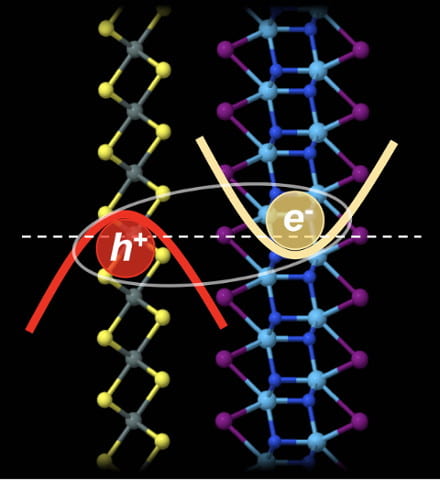Rice researchers find ‘paradox’ in ground-state bilayers
 Mixing and matching computational models of 2D materials led scientists at Rice University to the realization that excitons — quasiparticles that exist when electrons and holes briefly bind — can be manipulated in new and useful ways.
Mixing and matching computational models of 2D materials led scientists at Rice University to the realization that excitons — quasiparticles that exist when electrons and holes briefly bind — can be manipulated in new and useful ways.
The researchers identified a small set of 2D compounds with similar atomic lattice dimensions that, when placed together, would allow excitons to form spontaneously. Generally, excitons happen when energy from light or electricity boosts electrons and holes into a higher state.
But in a few of the combinations predicted by Rice materials theorist Boris Yakobson and his team, excitons were observed stabilizing at the materials’ ground state. According to their determination, these excitons at their lowest energy state could condense into a superfluid-like phase. The discovery shows promise for electronic, spintronic and quantum computing applications.
The open-access study by Yakobson, graduate student Sunny Gupta and research scientist Alex Kutana, all of Rice’s Brown School of Engineering, appears in Nature Communications.
– See more at Rice News


